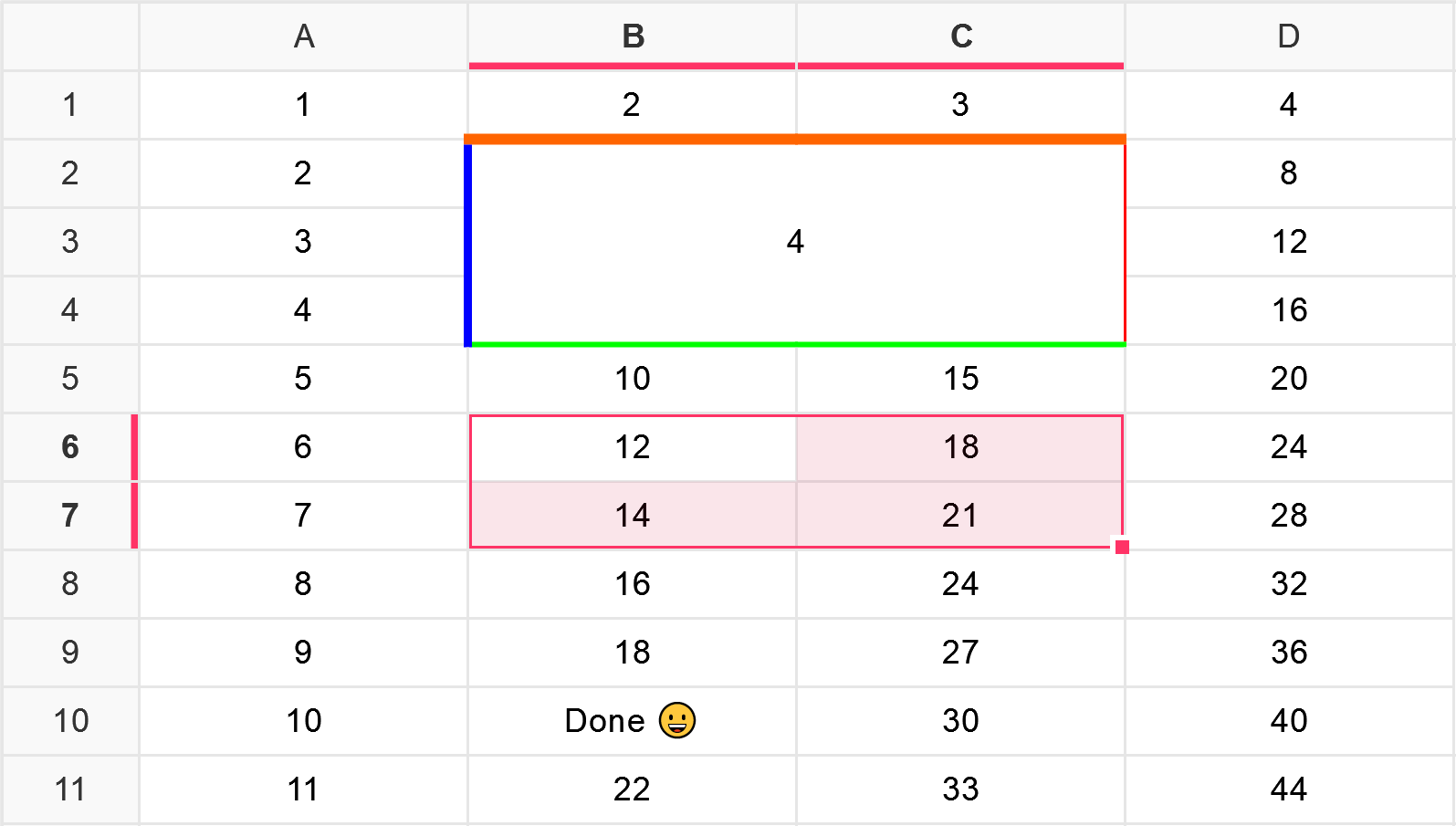Library to visualize huge tables in web environments with high-performance rendering.
Screenshot showing the demo application from https://bennyboer.github.io/table-engine/. Your implementation does not need to look like that, row/column headers are optional and need to be defined by yourself.
- You need to display huge tables on your web page?
- A normal HTML table element is just not good enough (laggy, not developer friendly)?
- You need to be able to select cells?
- You need a library that does not dictate what kind of table you want to display (Spreadsheet, data visualization with column headers, ...)?
- HELP! How to do fixed rows and columns?!
Then this project might be just what you need!
Table Engine gives you freedom to display any kind of table you can imagine. Want to build a spreadsheet component or a high-performance data-visualization -> Why not?! With the Table Engine there are no such concepts as column/row headers, sorting, filtering, ... - just cells, borders, and one or multiple cell selections. Essentially Table Engine is more of a framework for building table components so you as a developer have to build your own thing on a higher abstraction level.
This project is nearly feature-complete. If you feel like there is something missing feel free to open an issue!
You might want to take a look at the current example being constantly rebuilt during development: https://bennyboer.github.io/table-engine/.
Note that the demo application is just an example. If you decide to use the Table-Engine, your use case may look very different to that depicted in the demo application. In case you're unsure whether this library fits your use-case you may open an issue to discuss the topic.
We aim to provide a high-performance table library that may display nearly infinite amounts of data without the user really noticing. Normal HTML table elements get pretty laggy when getting large and are thus not always an option. This library builds around HTML5 canvas to draw the table from scratch, thus achieving a smooth user experience.
Checkout the usage and installation file here.
First and foremost install NodeJS (Check one of the workflow files under .github/workflows for the current version we use).
Afterwards install yarn if you haven't already using npm install -g yarn.
Install dependencies using yarn install --frozen-lockfile in the root of the repository and also under example if you intend to run the example.
Build the library using yarn build or run tests with yarn test.
The example is an Angular application that you may start using yarn start in the example folder.

